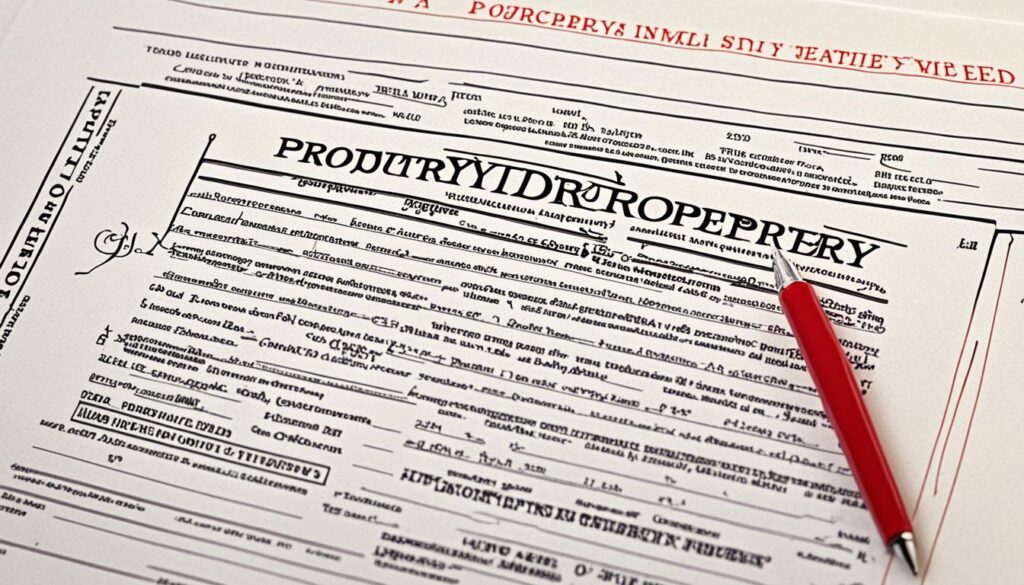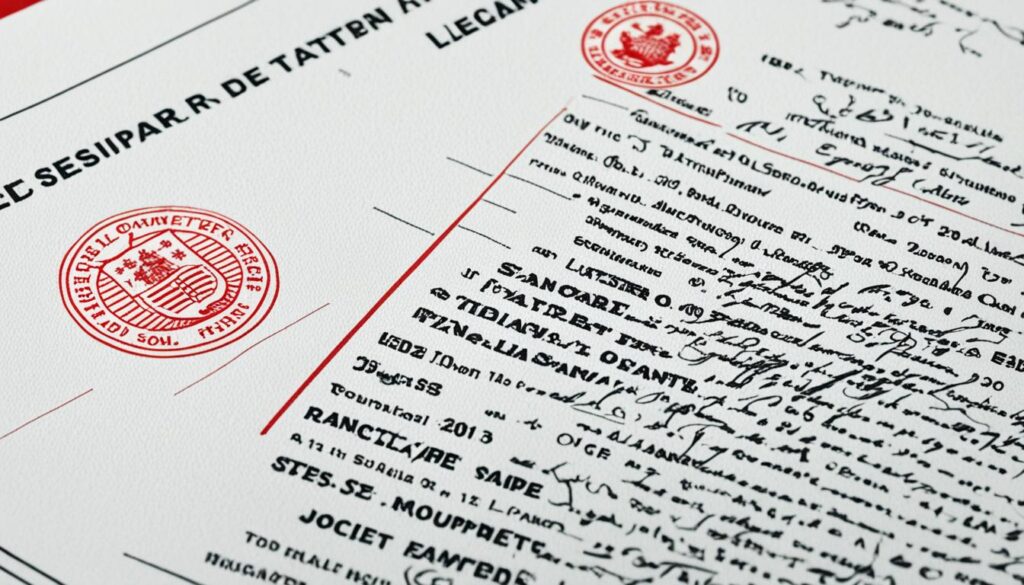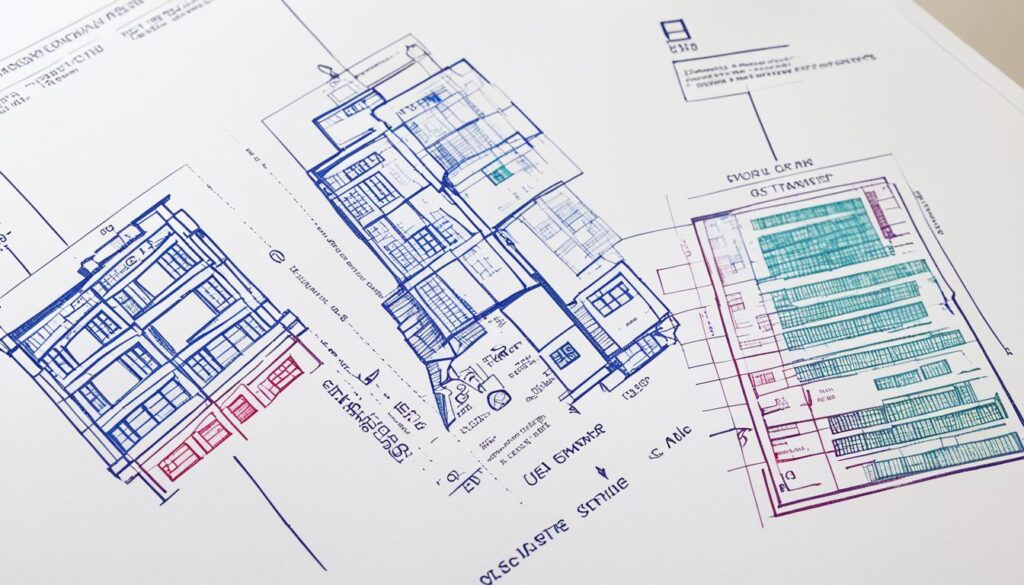A title deed in Singapore keeps track of all property deals, like who owns the property. If you want your name off this document, there’s a set legal way and some paperwork to do. This includes getting agreement from others involved, filling out forms, and handing in these documents. Knowing about different deed types, when you can remove a name, and the steps to take is key to doing this right in Singapore.

Key Takeaways
- A title deed is a critical document in Singapore that records all property transactions, including the owner’s details.
- Removing your name from a property deed requires following specific legal procedures and submitting the necessary documentation.
- The process may involve obtaining consent from stakeholders, preparing forms, and submitting documents to update the property’s ownership records.
- Understanding the different types of title deeds and the circumstances for name removal is essential for a smooth and compliant deed alteration.
- Consulting a conveyancing lawyer is advisable to ensure the deed amendment is executed properly and compliantly.
Understanding Title Deeds in Singapore
In Singapore, a title deed is a vital document for property owners. It contains records of all property transactions. These include the property’s details, its type, and the owner’s info. The title deed proves that you own the property.
What is a Title Deed?
A title deed is a critical legal document. It keeps a record of who has owned a property and any changes in ownership. This document includes property specifics, its type, and owner information. It helps to identify the rightful property owner.
Types of Title Deeds in Singapore
Singapore has three main title deed types:
- Certificate of Title for landed properties
- Subsidiary Strata Certificate of Title for condominiums and apartments
- Subsidiary Certificate of Title for HDB flats
Storing and Viewing Title Deeds
When a property has a mortgage or CPF funds are used, the title deed is at the Land Titles Registry. Owners can check their title deeds online through MyProperty if they’re digital. If lost or physically released, owners need to get a new one.

Circumstances for Removing Names from Title Deeds
In Singapore, you might need to take a name off a property deed for different reasons. This could be because someone changed their name or if a co-owner has died. It might also happen when the ownership changes in some way. No matter why, there are steps you must follow to legally and successfully change the deed.
Change of Name
If your name legally changes, you have to update the property title deed. First, get approval from those involved, like the mortgage company or the CPF Board. Then, fill out the right paperwork and send it to the correct office.
Removal of Deceased Owner
When a co-owner passes away, their name should be taken off the title deed. Getting this done can be tricky. You need permission from the deceased owner’s legal heirs. Plus, make sure all the bills are paid before the deed change can happen.
Addition or Removal of Co-Owner
If the ownership of the property changes, the title deed should as well. This change might happen after a marriage, divorce, or if the property shifts to someone else. The way to do this legally can change based on why the ownership changes.
Understanding Legal Implications
When you remove a name from a property title, there are big legal issues to consider. If the property has a mortgage or if CPF funds were used, things get more complex. It’s key to know the laws and follow them to avoid problems.
Obtaining Consent from Stakeholders
You may need agreement from different people or groups before you change the deed. This includes mortgage lenders, the CPF Board, or other co-owners. Getting this consent is crucial for a smooth update of the deed.
Preparing Necessary Documentation
Changing a deed requires specific forms and documents. You’ll need to show who you are, what you own, and any money details. Having all the right documents ready makes the process go faster and without any hassles.
Submitting Documents and Updating Records
After you have all that you need, the last step is to send your paperwork to the right office. In Singapore, this is usually the Singapore Land Authority. It’s important to make sure the title deed reflects exactly who owns the property.
Changing Ownership of HDB Flats
Transferring a HDB flat is not the same as doing so for private homes in Singapore. You can change the flat’s ownership by adding or removing a co-owner. Also, a change can happen if the original owner dies.
Types of Ownership Changes in HDB Flats
You can change HDB flat ownership in different ways. For example, you can add, remove, or replace co-owners. This often happens because of life changes, like marriage, divorce, or a death. It’s important to know the various ways you can transfer HDB flat ownership to move through the process easily.
Eligibility Conditions for Incoming Owners
To be added as a co-owner of an HDB flat, you must meet certain rules. Usually, you need to be at least 21 years old and fit other criteria the HDB has. The owners must have also finished the minimum stay and sorted out CPF funds before the transfer.
Process for Transferring HDB Flat Ownership
Changing the title of a HDB flat involves several steps and rules. Owners need to give the HDB the right documents, like forms and ID. There might be stamp duty for the present owners to pay, and other financial rules apply. Since the process can be complicated, it’s smart to get legal advice to make sure you follow all the steps correctly.

Conclusion
Removing your name from a property deed in Singapore is not simple. It requires following specific legal procedures and documentation requirements. This is true for both private properties and HDB flats.
First, you need to know about different title deeds and when you can remove a name. Secondly, you must understand the steps. This includes getting consent from others and submitting the necessary documents.
The process can be quite hard, especially for HDB flats. So, it’s advisable to consult experienced conveyancing lawyers. They offer professional help and make sure you follow all the rules correctly. They guide you on key takeaways removing name from property deed singapore and protect your interests.
In the end, to remove your name from a deed in Singapore, you must be very careful. Knowing the importance of professional guidance for title deed changes is key. With legal experts’ help, you can update your property’s ownership without worries.
FAQ
What is a title deed and what are the different types in Singapore?
A title deed is like a detailed birth certificate for a property in Singapore. It shows key info like property type, any debts, and who owns it. In Singapore, you’ll find three main types: one for houses and lands, another for condos and flats, and a special one for HDB flats.
How can I view my property’s title deed in Singapore?
If your property’s title deed is digital, you can see it online. Go to the MyProperty portal. But, if it’s not digital, you might need a new one if it gets lost or damaged.
What are the common reasons for removing a name from a property title deed in Singapore?
There are a few reasons why you might take a name off a property deed in Singapore. This could be due to a name change, if someone passes away, or if you’re changing who owns the property.
What is the process for removing a name from a property title deed in Singapore?
To remove your name from a property deed, you’ll need agreement from everyone involved. After that, fill out the needed paperwork and hand it in. This process can be different based on things like having a loan or using CPF savings.
How does the process differ for changing ownership of an HDB flat in Singapore?
Changing who owns an HDB flat is quite different from other properties. There are specific steps for adding, removing, or replacing owners. Those buying an HDB must meet certain rules. Sellers need to complete their MOP and pay back CPF used.